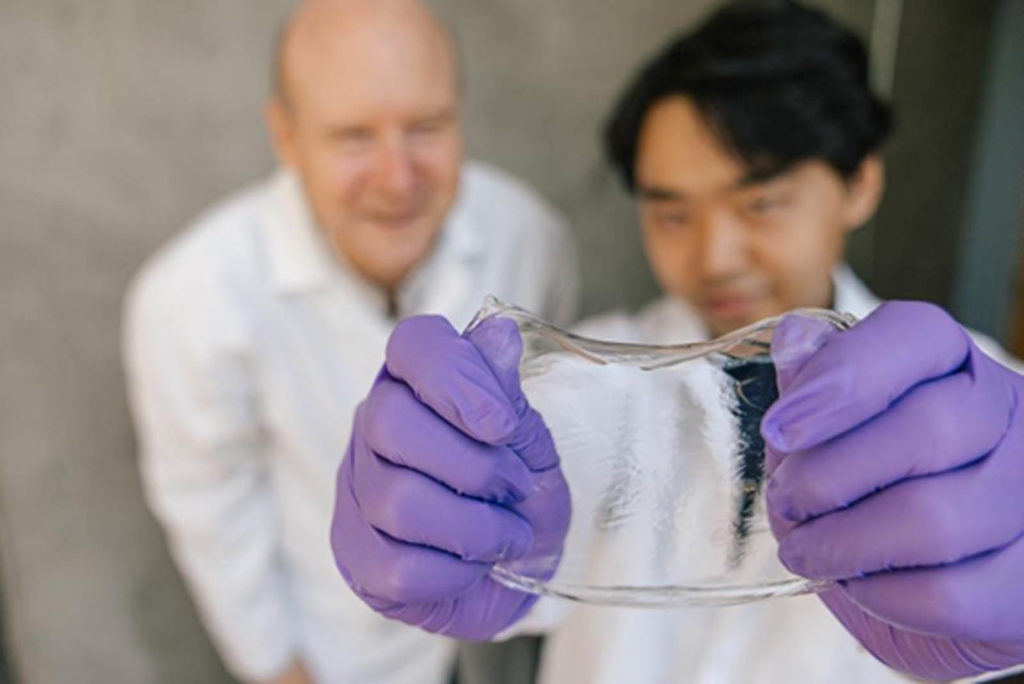Smart skin mimics human skin’s sensing ability
May 9th, 2022
Dr. John Madden and Yuta Dobashi with one of the hydrogel sensors. Photo: Kai Jacobson/UBC Faculty of Applied Science. Researchers have worked to build a smart skin that can mimic the sensing capabilities of natural skin, but this has been elusive. Now, a team of scientists at the University of British Columbia (UBC) have had […]
New “skin” could help prosthetics and robots sense injuries
June 28th, 2021
An artificial skin attached to a person’s knee develops a purple “bruise” when hit forcefully against a metal cabinet. Photo: Adapted from ACS Applied Materials & Interfaces 2021, DOI: 10.1021/acsami.1c04911. When a person bumps an elbow against a wall, they not only feel pain but can also experience bruising. But robots and prosthetic limbs don’t have these […]
Silk composite helps artificial skin last longer
August 6th, 2018
Artificial skin-like systems can be used in place of animals to test pharmaceuticals and cosmetics or to model how wounds heal. But commercially available human skin equivalents (HSEs), typically last about one week before degradation begins. A new matrix, however, could enable longer-terms studies of human skin responses over weeks or even months and be […]
U.K. team replicates natural camouflage
July 24th, 2015
Researchers at the University of Bristol in the U.K. have developed smart materials that behave like an artificial skin and can mimic the camouflage of cephalopods, such as squid. The development has potential applications for military and rescue work. As explained in Interface, the Royal Society’s journal, the team detailed the design, mathematical modeling, simulation […]
 TEXTILES.ORG
TEXTILES.ORG



